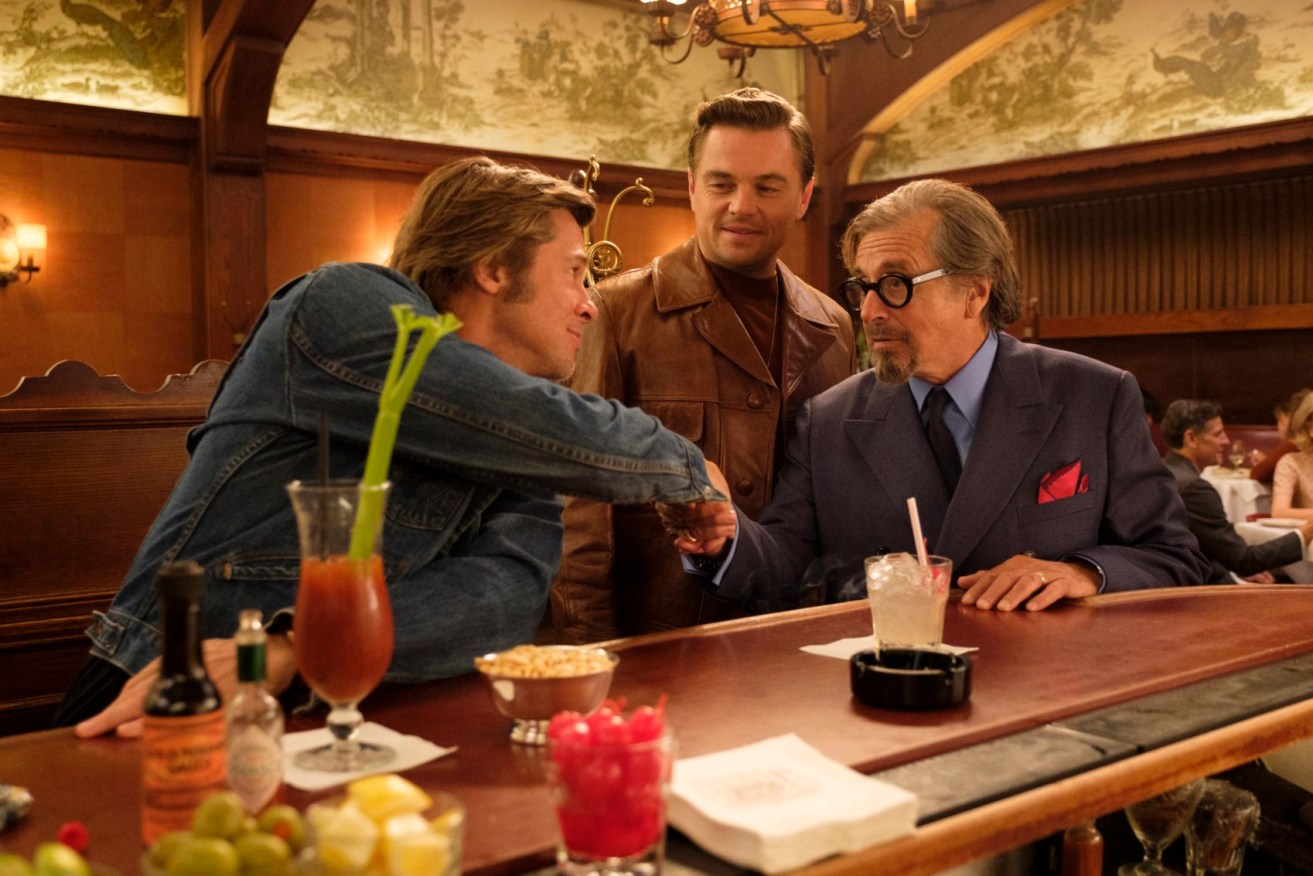Film review: Once Upon a Time in Hollywood
Quentin Tarantino’s latest tale of a TV-western actor and his stunt double crossing paths with the Manson Family is a wild ride through Hollywood and an industry on the cusp of change.


Set in 1969, the film follows the career decline of Rick Dalton (Leonardo DiCaprio), the star of a TV western series in the 1950-’60s called Bounty Law, and his long-time stunt double and best friend Cliff Booth (Brad Pitt).
With the cancellation of Bounty Law, Dalton’s career is in freefall and he’s trying to make ends meet by playing villains in TV dramas starring the next generation of action heroes. Now working primarily as Dalton’s driver and gofer, Booth is not faring much better, sharing a dilapidated trailer with his dog out the back of a drive-in theatre.
As both men cruise the streets and backlots of Hollywood in Dalton’s coupe de ville, Booth seems more content with his situation, or at least more resigned to his dwindling career prospects, than his best friend. Dalton forged his career as a “man’s man” in the style of John Wayne, but times are changing, as is Hollywood’s taste in leading men. Dalton may prove that real men do cry (we see him well up several times) but his style of manly TV-cowboy can now only secure him work in Italian spaghetti westerns.
As we follow these two down-on-their-luck charmers through Hollywood, there’s another story unfurling. In fact, it’s right next door. The director Roman Polanski (Rafal Zawierucha) and his wife Sharon Tate (Margo Robbie) just happen to be Dalton’s neighbours on Cielo Drive in the Hollywood hills.
Tarantino’s skill at interweaving storylines comes to the fore again in this film. He draws us into Tate’s life, her budding acting career, Hollywood lifestyle and unusual living arrangements – then ramps up the suspense with a fleeting glimpse of Charles Manson casing her house.
The two storylines begin to draw together when Booth gives a lift to teenaged Manson girl Pussycat (Margaret Qualley). She gets him to drive her to the Spahn Movie Ranch where, in a particularly creepy and suspenseful scene, he comes face to face with the women of the Family.
Up to this point in the film, Tarantino has been in his element. There’s great dialogue, enthralling characters and plot digressions that sweep viewers along without question. The cultural layering is brilliant. This particular point in time, when Hollywood was caught between two eras, has obsessed the director for decades and it shows. The music, the cars, the neon: all the cultural symbols of the era are piled on top of one another and artfully noisy.
Two-thirds of the way through the film, however, there’s a break in the narrative and it loses a little momentum. The narrator, whose voice was cleverly used in the establishment scenes, now feels like an unwelcome interjection. Despite the stumble, the film then accelerates towards the climax.
I wanted to love Once Upon a Time in Hollywood, and I did for the majority of its two hours and 40 minutes running time. And, as with all of Tarantino’s creative reimaginings of history, it pays to keep in mind that this is a movie, not a documentary.
Tarantino fans will love the overwhelm of musical and visual detail and the crafty writing. It wouldn’t be a Tarantino film, either, without his trademark prodigious-to-the-point-of-ludicrous violence. This may not be the crowning glory of his nine feature films but it’s well worth seeing it just as he intended – on the big screen.




